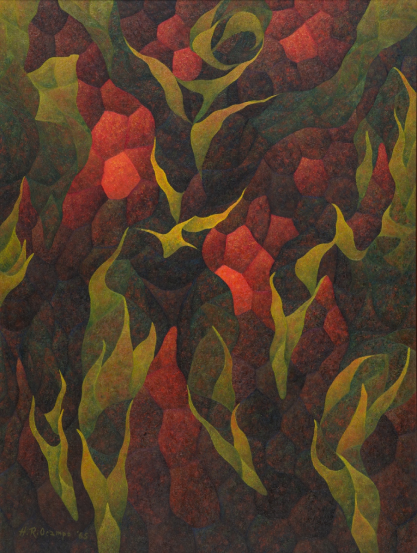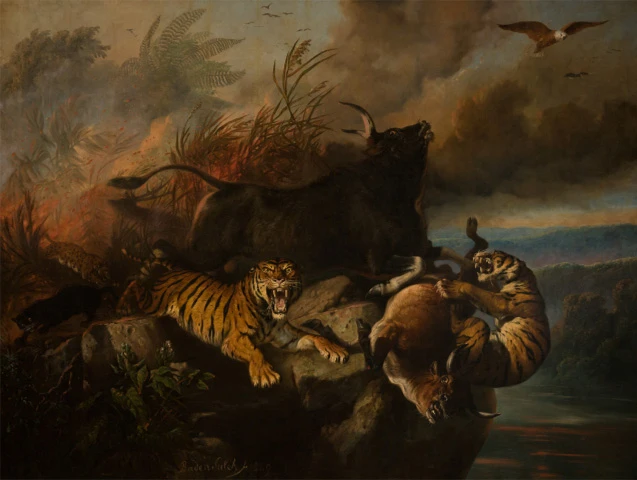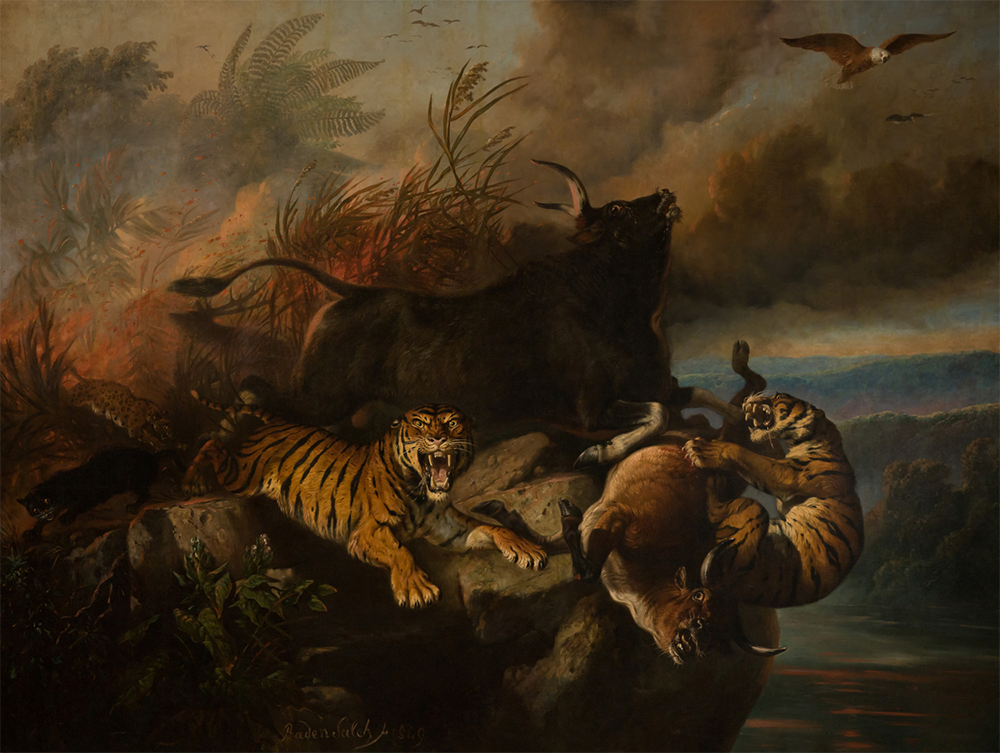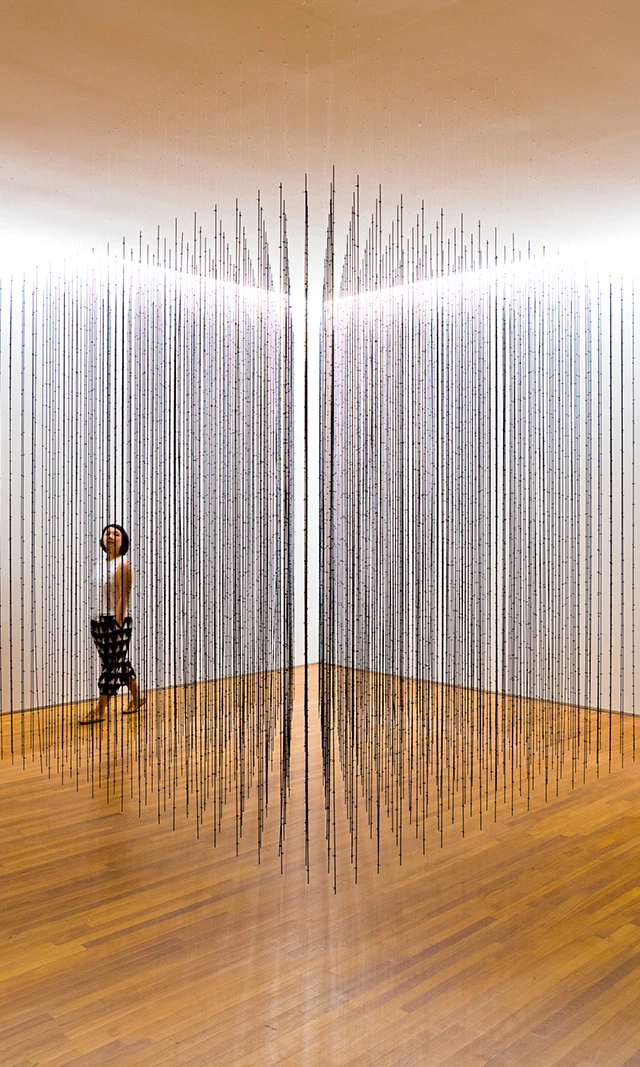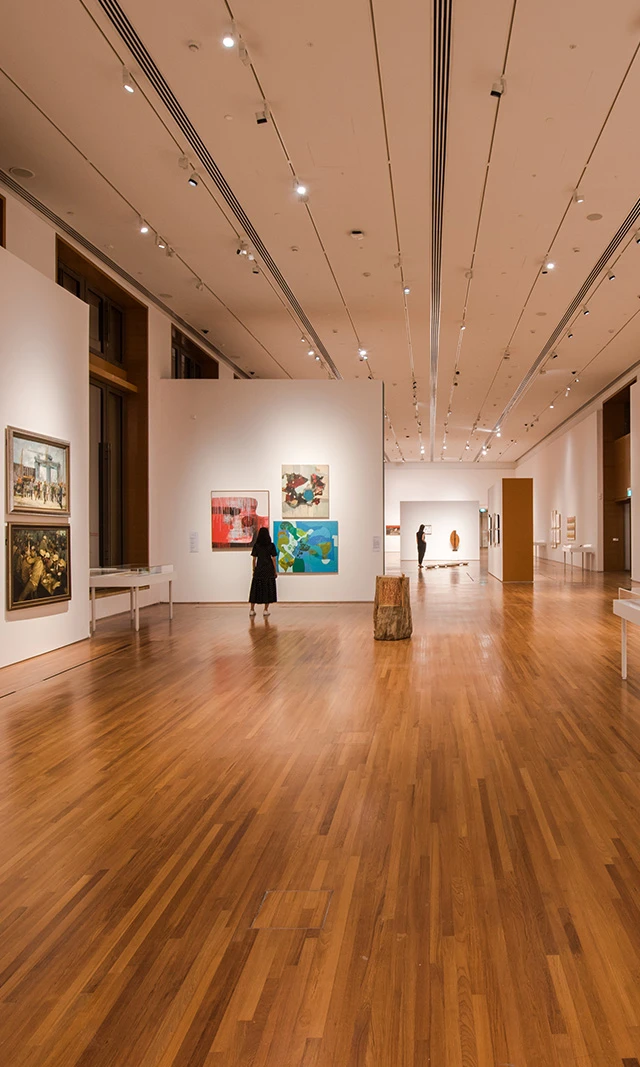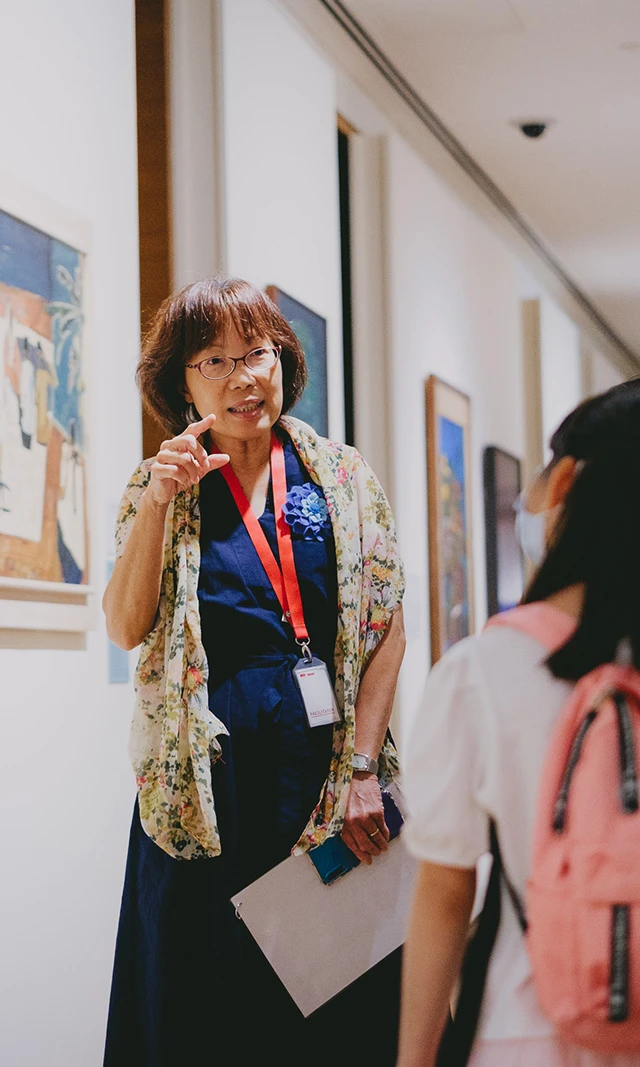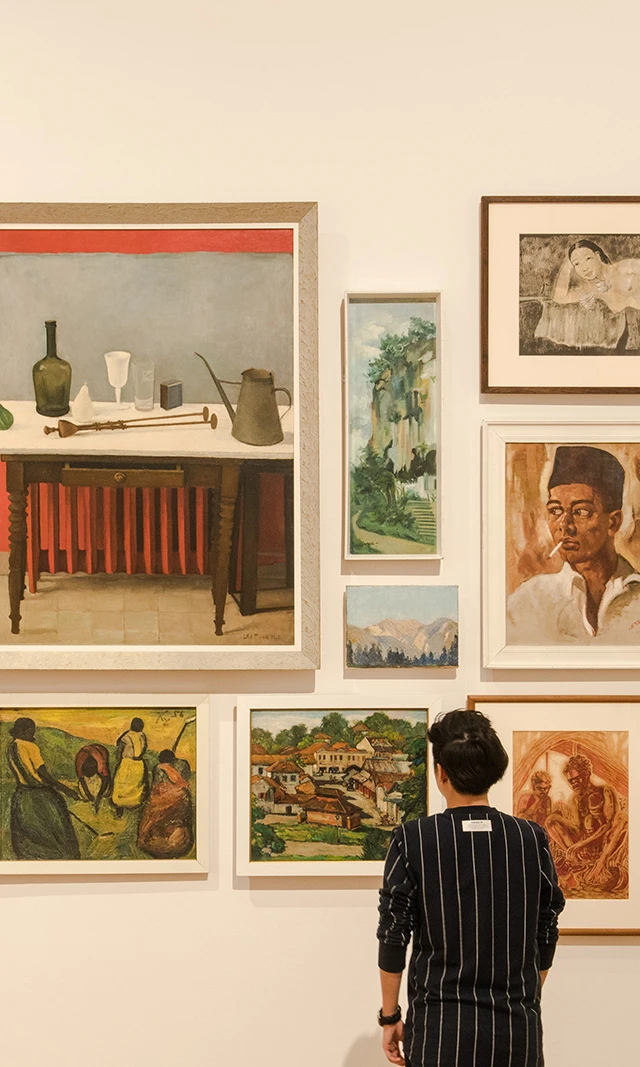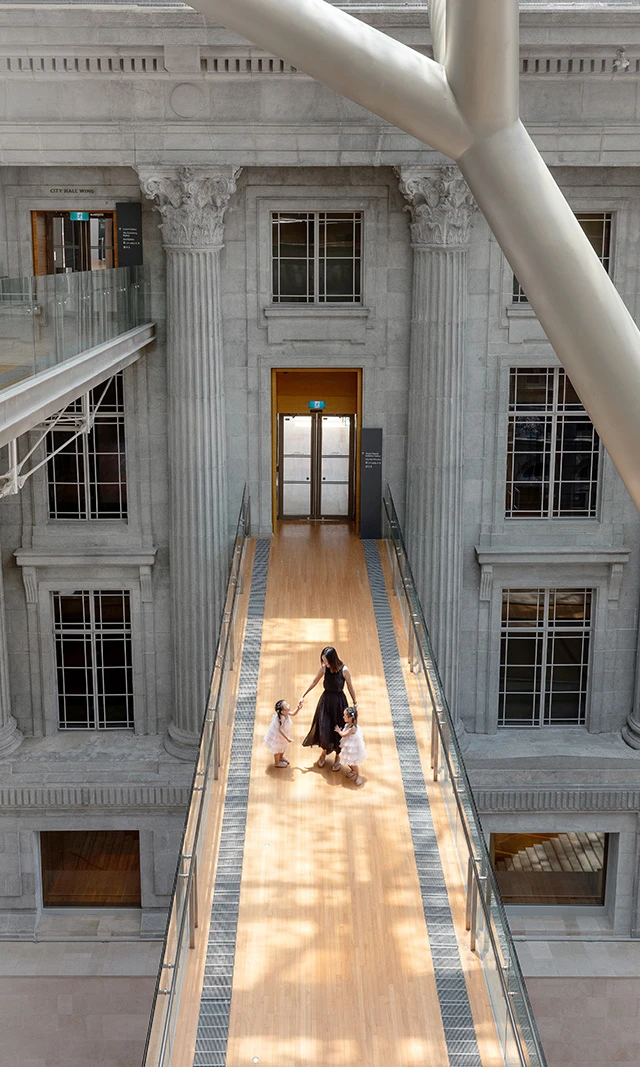National Gallery Singapore debuts new exhibition series Dalam Collection with first exhibition tracing the ebbs and flows of ink
The inaugural exhibition showcases over 50 new acquisitions and never-before-seen works from the National Collection by prominent artists such as Chen Wen Hsi, Guan Shanyue, Hong Zhu An, Latiff Mohidin, Liu Kang, Nena Saguill, and more.
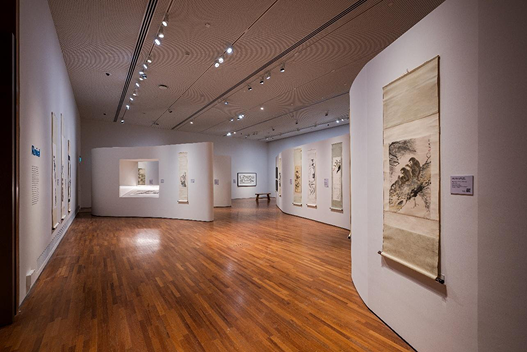
SINGAPORE, 2 June 2025 – This June, uncover a new dimension of ink with the debut show of National Gallery Singapore’s new exhibition series, Dalam Collection. Running from 6 June to 16 November 2025, Where Ink Tides Meet showcases over 50 works from the National Collection – a large majority of which are on public view for the first time. The exhibition includes captivating ink works by key figures across the region, such as Chen Wen Hsi, Guan Shanyue, Hong Zhu An, Latiff Mohidin, Liu Kang and Nena Saguil.
Taking its name from the Malay word dalam, meaning “inside” or “deep within,” Dalam Collection builds on the curatorial experimentation of its predecessor, Dalam Southeast Asia. This series invites visitors to examine how collections are formed, interpreted, and experienced. Each installment, presented whenever a new facet of the Gallery’s Collection emerges, showcases recent acquisitions and curatorial research to reveal lesser-known connections across time and place, recasting familiar narratives and uncovering new ones, with dialogues between the art of Singapore, Southeast Asia, and the world as a focal point.
Where Ink Tides Meet kickstarts the series with a focus on ink, building on the Gallery’s ongoing research on this versatile medium. It positions Singapore as a critical place where ink traditions have met, evolved, and converged through artists who reimagined the medium across generations, geographies, and cultural traditions. The exhibition expands the understanding of ink beyond its classical forms, inviting visitors to explore how the medium has been reinterpreted through modern sensibilities, cross-cultural encounters, and experimental techniques.
“Dalam Collection reflects a fundamental shift in how we share our collection with the public. By revealing greater insights into our acquisition and curatorial processes, we invite visitors to witness how the Gallery builds meaningful connections between Singapore, Southeast Asia, and global art histories,” says Dr. Patrick Flores, Chief Curator, National Gallery Singapore. “It is only intuitive that we begin the series with an exploration of ink practices, drawing from our extensive research on the dynamism of this medium across Southeast Asia. We hope visitors to Where Ink Tides Meet will come away with a deeper appreciation of the artistic innovation inherent in ink practices and the thoughtful processes through which our National Collection is shaped and presented.”
A thematic exploration of the fluidity of ink practice
Organised into three curatorial sections – Revival, Encounter, and Nexus – Where Ink Tides Meet charts how generations of artists have challenged, transformed, and reimagined ink beyond traditional forms.
Revival invites audiences to explore recurrent returns to cultural origins through the timeless medium of ink painting. The section sheds a metaphorical and literal light on these artists and artworks, where it not only gives the artists due recognition for their efforts and contributions to ink, but also marks the first time many of these artworks are being publicly shown For instance, artists like Khoo Seok Wan, upheld literati ideals and helped sustain ink as a shared cultural practice; and artists like Liu Kang and Chen Chong Swee incorporated reformist ideas in ink painting which they were introduced to while they were studying at Shanghai's Xinhua Academy of Art. Visitors can explore how each of the works in Revival reflects the artists’ hopes of revitalising the ink medium through their practices.
Encounter explores the artistic exchanges that evolved when people, ideas, and traditions came into contact and networks among artists and collectors in the region were cultivated in the process. Singapore’s dynamic role as a vibrant meeting point is reflected not only in the artworks themselves, but also in the stories they carry—from artist networks and regional exhibitions to the generosity of collectors who helped circulate these works across borders. Visitors will encounter artworks such as Guan Shanyue’s [Not titled] (An Indian Lady and Tropical Trees) (1947) dedicated to the Society of Chinese Artists, which speak to moments of curiosity, connection, and reinterpretation. These pieces offer insight into how these artists responded to new environments and influences, showcasing how the exchange of ideas has continually refreshed the ink medium.
Nexus brings the exhibition to a close with a look at ink's continuous adaptation and reinvention. In this section, visitors will encounter bold, unexpected approaches that stretch the medium beyond its traditional boundaries through unconventional materials, abstract forms, and experimental techniques. From layered paper pulp and pigment washes to minimalist gestures and conceptual imagery, these works challenge the conventional understanding of the aesthetics of ink and the ideas, emotions, and narratives it can convey. Just as earlier generations adapted ink to new contexts, artists continue that impulse, drawing from diverse influences to create hybrid forms that can be both rooted and radically new. Through this, Nexus invites visitors to rethink familiar notions of ink and to see how the medium remains open, evolving, and deeply connected to the cultural dynamism of Singapore and Southeast Asia.
Dalam Collection: Where Ink Tides Meet at National Gallery Singapore
Dalam Collection: Where Ink Tides Meet runs from 6 June to 16 November 2025 at the Ngee Ann Kongsi Concourse Gallery. Entry is free for all. For more information, please refer to the attached annexes or visit https://www.nationalgallery.sg/sg/en/exhibitions/Dalam-Collection-Where-Ink-Tides-Meet.html#about.
Media assets are available through this link.
Annex A: Dalam Collection: Where Ink Tides Meet Sections and Key Artworks
Annex B: Curatorial Public Programmes
Annex A: Dalam Collection: Where Ink Tides Meet Sections and Key Artworks
Revival: Holding Tradition, Honing Change
The exhibition opens with Revival, a reflective process that reaffirms identity through the preservation and reinterpretation of familiar traditions drawn from the long history of ink painting. From as early as the 19th century, Singapore emerged as a crossroads of cultural and artistic exchange, attracting artists who upheld classical ink values while adapting them to local contexts. Often working across disciplines as calligraphers, poets, teachers, and cultural leaders, these artists carried the intellectual spirit of literati painting into a new Southeast Asian setting. Despite their contributions, many have remained under-recognised due to war, shifting artistic trends, or limited documentation. This section reclaims their legacies, offering a renewed lens through which to view the revival of ink, not as static inheritance, but as a living practice.

.png)
Among the most steadfast figures of ink in this section are Khoo Seok Wan and Liu Xiande, whose practices reflect a deep commitment to the discipline and refinement of traditional ink painting. A scholar-poet and cultural leader in early 20th-century Singapore, Khoo embodied the ideals of the literati. His painting, Orchids on a Scholar Rock (1874), invokes classical symbols–orchids for moral integrity, and scholar’s rocks for resilience and contemplative depth–demonstrating not just artistic skill, but also conveys philosophical conviction. Similarly, Liu Xiande, a graduate of Shanghai’s prestigious Xinhua Academy, dedicated himself to the rigorous training and expressive subtlety of the xieyi (idea-writing) style. His painting, Rambutans and Sparrows (1959), showcases a quiet mastery of brush technique and compositional balance, using classical form to render a masterful, serene bird-and-flower scene. Together, Khoo and Liu represent a generation of artists for whom ink was a disciplined art form – one perfected through years of study and upheld as a moral and cultural touchstone.
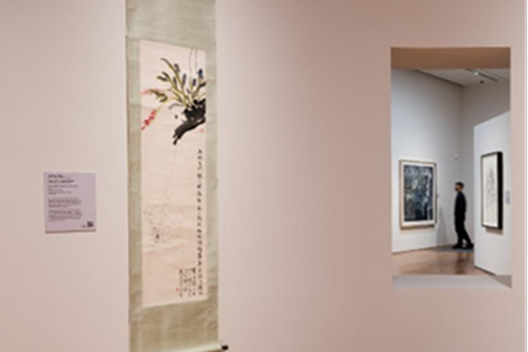
One artist who signalled a quiet but intentional shift away from such classical perfectionism was Liu Kang. Best known for his contributions to Singapore’s modern art movement, Liu embraced ink as a form of inherited technique and a tool for experimentation and expressive freedom. In Spider and Flowers (1947), created in collaboration with fellow artist Chen Chong Swee, Liu’s use of bold brushstrokes to depict vibrant orchids departs from the detailed realism of traditional bird-and-flower painting. Paired with Chen’s finely drawn spider and web, the work becomes a subtle dialogue between restraint and spontaneity. The painting reflects Liu’s willingness to depart from established formalities, signalling his role in modernising ink practice while retaining a connection to its philosophical and compositional foundations. His approach reflects a desire to push ink painting into the visual language of a rapidly changing world.
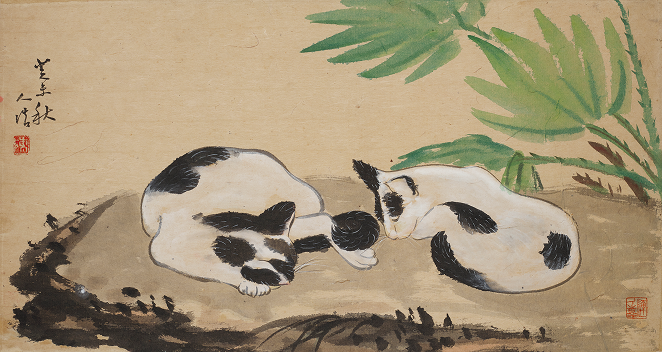
In a more introspective register, Chen Jen Hao’s Who Wakes Up First from the Dream (1943) uses ink as a philosophical medium for personal reflection. Created during wartime turbulence in Malaya, the artwork captures the everyday scene of two resting cats in fluid, understated strokes. Its title draws from a line in the ancient parable by the Chinese philosopher Zhuangzi, in which the thinker dreams of being a butterfly, only to awaken and question whether he is now a man who dreamed of being a butterfly, or vice versa, alluding to more profound meditations on impermanence and identity. For Chen, a painter shaped by both Shanghai and Parisian traditions, this period of existential ambiguity shaped how he looked at themes of dislocation, perception, and inner life, and this ink work demonstrates how the medium balances the figurative and implicit.
Encounter: Dialogues in Ink
To Encounter is to engage with discoveries and, in turn, cultivate networks among artists and collectors within and beyond the region. This section looks at how exhibitions, artistic networks, and gatherings have long been key platforms for dialogue and exchange in Singapore, which in turn fostered encounters that often evolve into discoveries that build connections within and beyond our shores. For instance, the Society of Chinese Artists (est. 1936) had a long-standing tradition of hosting foreign artists as early as 1937. The works in this section reflect the richness of such ties, where the spirit of engagement is also evident in the generosity of private collectors who have gifted works by Chinese ink modernists of the 20th century to the National Collection.

The Singapore’s Society of Chinese Artists was pivotal in this cultural landscape. Through exhibitions and personal invitations, it offered artists a platform to share their work and engage with new communities. Guan Shanyue presented [Not Titled] An Indian Lady and Tropical Trees (1947) to the Society during his travels through Malaya. Rendered in expressive brushwork and tropical colour, the painting reflects Guan’s interest in the region’s landscapes and people, and his willingness to step beyond the conventions of Chinese ink painting. Gifting the work marked more than a personal gesture, affirming the Society’s role as a site of transnational dialogue and exchange.
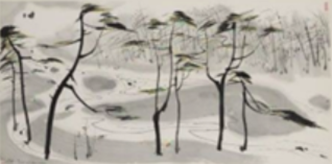
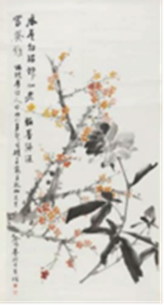
This spirit of encounter extended beyond exhibitions, finding continuity in the relationships between artists, students, and collectors. These connections were often forged in intimate settings, through shared meals, workshops, studio visits, and the informal gatherings that sustained Singapore’s artistic community. Works such as Wu Guanzhong’s Running Stream (1988) and Aromatic Scent in the Cold and New Mark in Ink (1985), a collaborative scroll by Fan Chang Tien, Szeto Kei, and Pan Shou, were both shaped by and circulated through these networks. Wu’s lyrical landscape reflects a deeply personal synthesis of Chinese and Western visual vocabularies, developed through his experiences in Hangzhou and Paris. Aromatic Scent in the Cold and New Mark in Ink, created during a reunion of local and visiting artists, brings together three distinct traditions from Shanghai, Lingnan, and Singapore, layered through blossoms, peonies, and calligraphic verse. These works are united by the conditions of their making: animated by cross-cultural exchange, supported by patrons, and gifted into public care. They reflect how the ink tradition in Singapore was kept alive not just through solitary innovation but through bonds of generosity, artistic kinship, and mutual respect.
Nexus: Ink, Unbound
Nexus looks at how diverse strands of modernism and varied entry points into ink have forged new visual languages in ink. With Southeast Asia being an active site of cultural exchange where the aesthetic vitality of ink continues to reinvent itself, some artists such as Latiff Mohidin and Richard Walker look outwards, engaging with traditional Chinese ink practices in expansive ways. Others like Hong Zhu An and Nguyễn Minh Thành, turn inwards, grounding their practices in memory and heritage. This section reflects the dynamic process of continuity and transformation in ink practice, giving rise to pluralistic expressions.
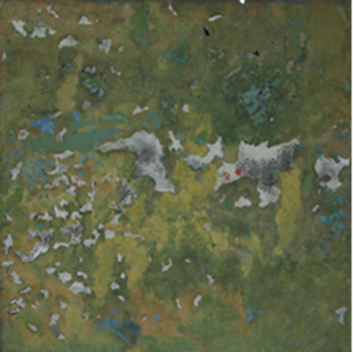
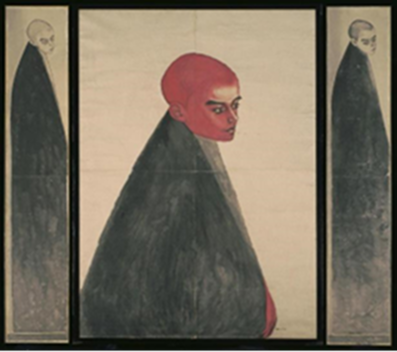
For artists like Hong Zhu An and Nguyễn Minh Thành, ink is incorporated into their contemplative artistic practices. Hong Zhu An’s Idle Thoughts (2022) depicts fragments of ancient stele inscriptions through calligraphic rhythm, textured layers, and softened washes of ink and colour to pay homage to the past and connect Chinese cultural and art traditions with the present. Similarly, Nguyễn Minh Thành’s Waiting (2001) is a contemplative self-portrait—a motif recurrent in Thành’s oeuvre. Thành's practice blends the aesthetics of calligraphy and traditional Vietnamese materials with a quiet exploration of identity, longing, and the self.
While some artists turn inward, others look outward, pushing ink into new materials, visual systems, and cross-cultural dialogues. In their hands, ink is not confined by medium or geography; it becomes a fluid logic applied across forms.
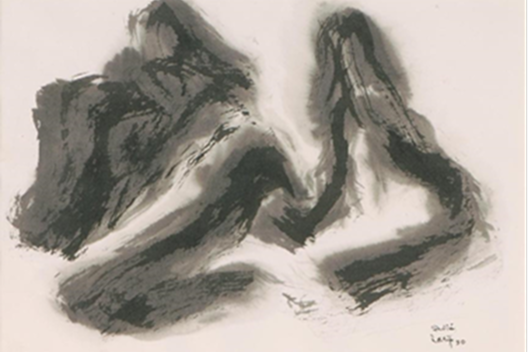
Latiff Mohidin’s Guilin (11) (1990) offers a rare glimpse into the artist’s engagement with ink, a medium less associated with his sculptural practice and his Pago Pago series. Inspired by the iconic limestone landscapes from his travels to China, Mohidin captured the natural forms through a calligraphy-like approach, reflecting his Nusantara worldview and deep study of East Asian artistic traditions.
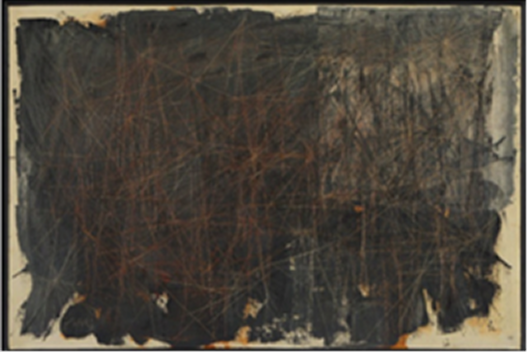
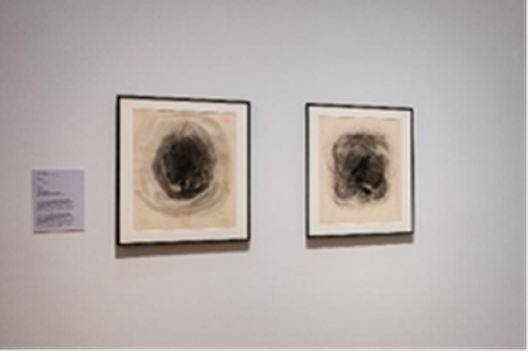
%201.png)
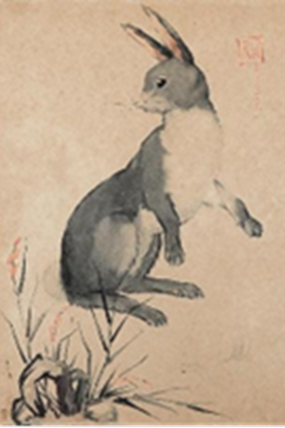
Fernando Zóbel’s Grabado I (1958), Nena Saguil’s Untitled (1962), ink drawings and Richard Walker’s Cockatoo and Rabbit (1957) demonstrate the expansive qualities, blending traditional ink practices with their unique practices. Zóbel adopted ink into his practice of abstraction, while Saguil approached ink and its aesthetic qualities as a metaphysical language. British artist and educator Richard Walker takes another approach with Cockatoo and Rabbit, incorporating his Western art training with the elegance of East Asian brush painting to create fauna illustrations. These posit that ink, historically associated with Asian artistic traditions, is not the preserve of any single culture but a visual language open to reinterpretation and playful translation across geographies and artistic practices.
Annex B: Curatorial Public Programmes
| Programmes | |
|---|---|
How INKteresting 1 – 31 July 2025 10am – 7pm daily City Hall Wing, Level 1, Keppel Centre for Art Education (KCAE) Free | Inspired by Running Stream by Wu Guanzhong, this hands-on activity invites you to let your imagination flow by turning a single brushstroke into anything you imagine. |
Curator Tour | Dalam Collection: Where Ink Tides Meet
Sunday, 22 June 2025 3pm – 4.30pm City Hall Wing, Level B1, The Ngee Ann Kongsi Concourse Gallery Free, registration required | Where Ink Tides Meet explores the fluid and evolving nature of ink art, tracing the transformations of ink as a medium beyond cultural and temporal boundaries. In this tour, exhibition curators Jennifer K. Y. Lam, Shujuan Lim and Chee Jin Ming will highlight selected recent acquisitions from the Gallery’s collection of ink artworks, inviting reflections on the continuing relevance of ink in Singapore and the wider region. |
Artist Talk | Hong Zhu An
Sunday, 27 September 2025 3pm – 4.30pm Supreme Court Wing, Level 5, Glass Room Free, registration required | Gain deeper insight into the artistic journey and creative process of acclaimed artist Hong Zhu An in this artist talk, moderated by exhibition curator Jennifer KY Lam. Simultaneous interpretation from Chinese to English will also be available. |

